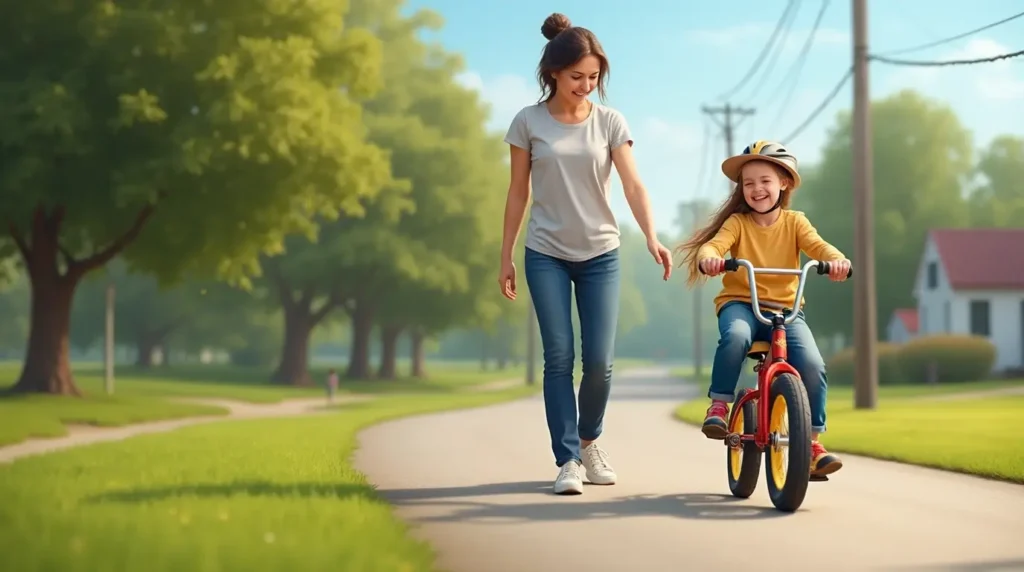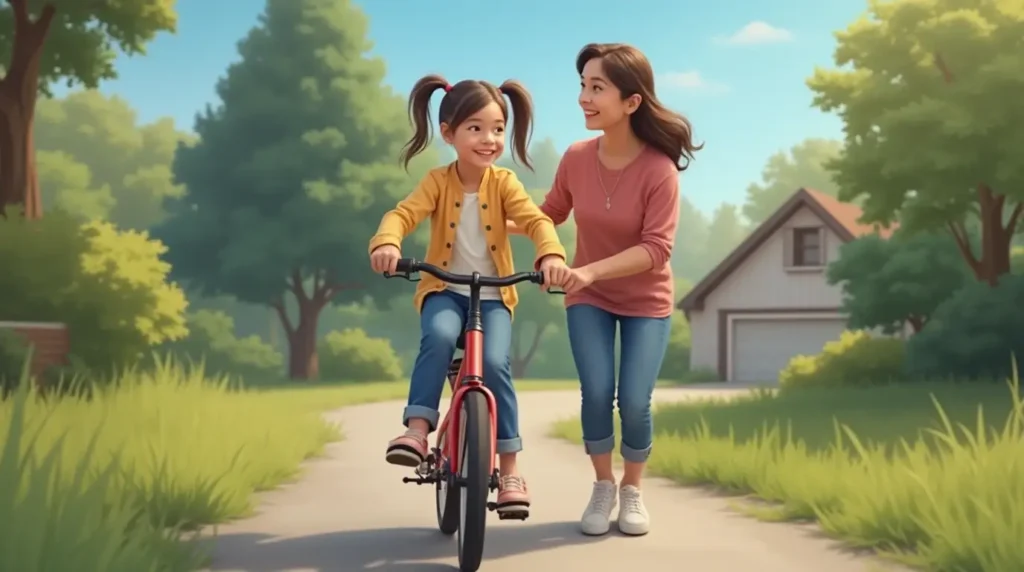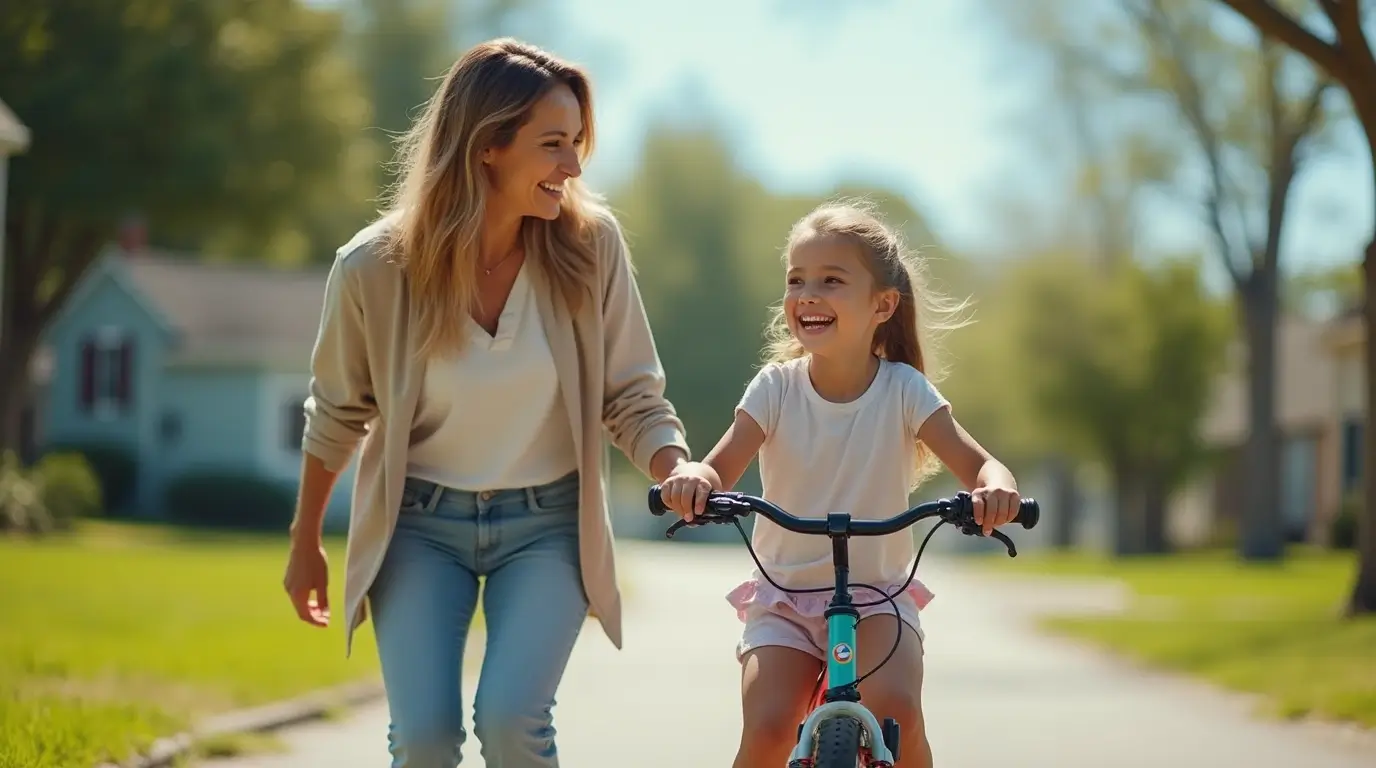There’s something magical about teaching a child to ride a bike. I still remember the first time my daughter wobbled down the sidewalk, her face lit up with a mix of fear and excitement. That moment wasn’t just about her learning a new skill—it was about trust, patience, and the joy of watching her gain independence. If you’re here, you’re probably gearing up to teach your child how to ride a bike. Trust me, it’s a journey worth taking.
In this guide, I’ll walk you through everything you need to know about how to teach a kid to ride a bike. From choosing the right bike to overcoming common challenges, I’ve got you covered. Let’s make this experience as smooth and enjoyable as possible for both you and your little one.
Table of Contents
Preparing to Teach: What You Need Before You Start
Before you even think about heading outside, it’s important to set the stage for success. Teaching a child to ride a bike isn’t just about hopping on and pedaling away—it’s about preparation, safety, and creating the right environment.
Choosing the Right Bike
The first step in learning how to teach a kid to ride a bike is making sure they have the right bike. I made the mistake of starting my daughter on a bike that was too big, and it only added to her frustration. Here’s what I’ve learned:
- Size Matters: Your child should be able to touch the ground with their feet while sitting on the seat. This gives them a sense of security and control.
- Balance Bikes Are a Game-Changer: If your child is under 5, consider starting with a balance bike. These pedal-less bikes help kids focus on balancing first, which makes the transition to a regular bike much easier.
- Lightweight is Key: A heavy bike can be hard for little ones to maneuver. Look for one made of lightweight materials.
Safety Gear Essentials
Safety should always come first. I’ll never forget the time my daughter took a tumble and scraped her knee. While it was a minor injury, it reminded me how important it is to gear up properly.
- Helmets Are Non-Negotiable: Make sure the helmet fits snugly and meets safety standards. According to the National Highway Traffic Safety Administration (NHTSA), wearing a helmet reduces the risk of head injury by up to 85%.
- Elbow and Knee Pads: These might seem like overkill, but they can prevent painful scrapes and bruises.
- Bright Clothing: Dress your child in bright or reflective clothing to make them more visible, especially if you’re practicing near roads.
Finding the Perfect Practice Spot
Location is everything. I made the mistake of starting in our driveway, which was too narrow and sloped. Here’s what to look for:
- Flat, Open Spaces: Parks, empty parking lots, or quiet streets are ideal.
- Smooth Surfaces: Avoid gravel or uneven terrain, which can make balancing harder.
- Low Traffic: Choose a spot where your child can focus without worrying about cars or pedestrians.

Step-by-Step Guide to How To Teach a Kid to Ride a Bike
Now that you’re prepared, it’s time to dive into the actual process of teaching your child to ride. I’ll break it down into simple, manageable steps that build on each other.
Step 1: Start with Balance
Balance is the foundation of bike riding. When I taught my daughter, I started by removing the pedals from her bike. This might sound strange, but it worked wonders.
- Remove the Pedals: Lower the seat so your child’s feet can touch the ground. Let them scoot around and get a feel for balancing.
- Encourage Gliding: Once they’re comfortable scooting, encourage them to lift their feet and glide. This helps them understand how to balance without worrying about pedaling.
- Use a Balance Bike: If you have one, this is a great alternative. Balance bikes teach kids to steer and balance naturally.
Step 2: Introduce Pedaling
Once your child has mastered balancing, it’s time to add pedaling back into the mix.
- Reattach the Pedals: Raise the seat slightly so their legs can extend fully while pedaling.
- Practice Pedaling Motion: Have them practice pushing the pedals with their feet while stationary. This helps them get used to the motion.
- Start on a Slight Incline: A gentle slope can provide enough momentum to make pedaling easier.
Step 3: Teach Steering and Braking
Steering and braking are crucial skills that often get overlooked. I learned this the hard way when my daughter almost crashed into a bush because she didn’t know how to turn.
- Practice Gentle Turns: Encourage your child to look where they want to go, not down at their feet.
- Teach Braking: Show them how to use hand brakes or coaster brakes. Practice stopping gradually to avoid sudden jerks.
- Build Confidence: Start with wide turns and gentle stops, then gradually increase the difficulty.
Step 4: Build Confidence with Short Rides
The final step is all about building confidence. This is where the magic happens.
- Start Small: Begin with short rides and gradually increase the distance.
- Celebrate Wins: Every little success deserves celebration. Clap, cheer, and make a big deal out of their progress.
- Be Patient: Some kids pick it up quickly, while others need more time. Don’t rush the process.

Common Challenges and How to Overcome Them
Teaching a child to ride a bike isn’t always smooth sailing. Here are some common challenges I’ve faced and how to tackle them.
Fear of Falling
Falling is a natural part of learning, but it can be scary for kids.
- Normalize Falls: Let them know it’s okay to fall and that everyone does it.
- Teach Safe Falling: Show them how to tuck and roll to minimize injury.
- Stay Positive: Offer reassurance and remind them of how far they’ve come.
Lack of Motivation
Some kids lose interest quickly, especially if they find it hard.
- Make It Fun: Turn practice into a game. For example, see who can glide the farthest.
- Set Goals: Break the process into small, achievable goals.
- Take Breaks: If they’re frustrated, take a break and try again later.
Difficulty Balancing
Balancing is the hardest part for many kids.
- Revisit Balance Exercises: Go back to scooting and gliding if needed.
- Use Training Wheels Temporarily: These can provide extra support while they build confidence.
- Be Patient: Balancing takes time, so don’t rush it.
Tips for Making the Learning Process Fun and Stress-Free
The key to success is keeping the experience positive and enjoyable. Here’s what worked for me:
- Keep Sessions Short: Kids have short attention spans, so aim for 15-20 minute sessions.
- Involve Friends: Practicing with peers can make it more fun and less intimidating.
- Celebrate Progress: Every step forward is worth celebrating.
Conclusion: Celebrate the Milestone
Teaching a child to ride a bike is more than just a skill—it’s a milestone that builds confidence, independence, and lifelong memories. I’ll never forget the pride on my daughter’s face when she finally rode on her own. It was a moment of pure joy for both of us.
If you’re just starting this journey, remember to be patient, stay positive, and celebrate every little win. And when your child finally takes off on their own, take a moment to soak it in. You’ve just given them a gift that will last a lifetime.

(FAQ) : How To Teach a Kid to Ride a Bike
What is the best age to teach a kid to ride a bike?
Most kids are ready between ages 3 and 6, but it depends on their physical and emotional readiness.
How long does it take to teach a kid to ride a bike?
It varies, but most kids learn within a few days to a few weeks with consistent practice.
Should I use training wheels to teach my kid to ride a bike?
Training wheels can help initially, but balancing bikes or removing pedals may be more effective for teaching balance.
How do I help my child overcome the fear of riding a bike?
Start slow, use positive reinforcement, and ensure they feel safe with proper gear and a supportive environment.
What if my child doesn’t want to learn to ride a bike?
Don’t force it. Make it fun, involve friends, and try again when they’re more interested.

